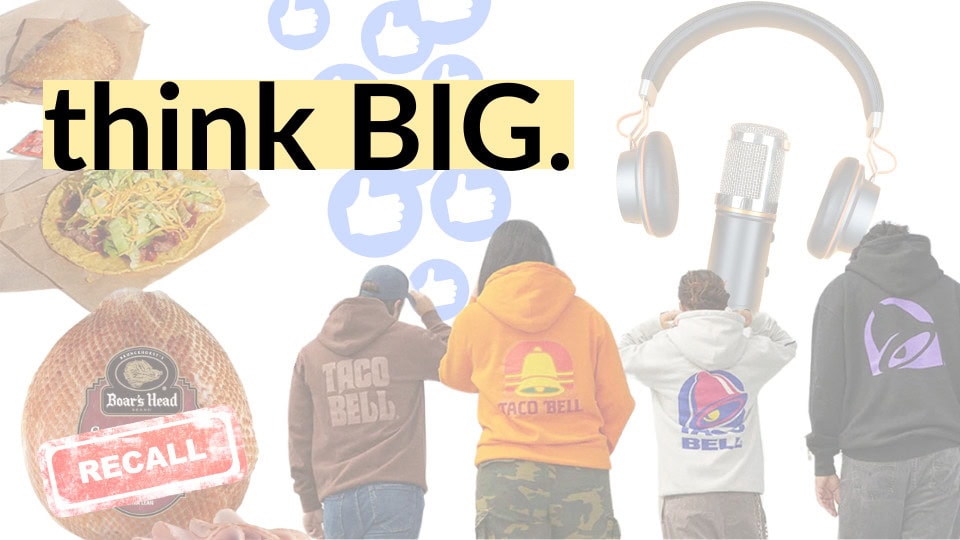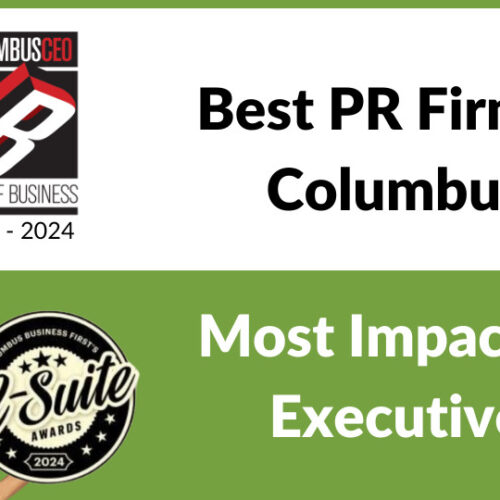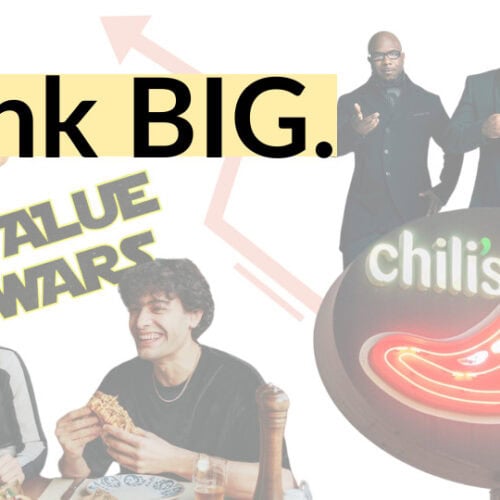Bold Brand Ideas: Nostalgia + Value + LTO = Taco Bell’s Recipe for Success
Taco Bell’s Decades Menu is a journey through the brand’s history, presenting fan favorites from each decade, starting in the ‘60s.
Launched nationwide on October 31, this limited-time lineup includes the ‘60s Tostada, the ‘70s Green Sauce Burrito, the ‘80s Meximelt and the ‘90s Gordita Supreme. The iconic Caramel Apple Empanada from the 2000s joins on November 21, rounding out the retro selection – all priced under $3 to compete in the value wars.
Taco Bell’s approach taps into “fauxstalgia,” catering to Gen Z’s fascination with eras they never experienced but feel connected to through social media. The campaign stands as a masterclass in how nostalgia can bridge generational gaps, appealing to both longtime fans and younger audiences intrigued by retro themes.
In addition to the menu, Taco Bell is leaning into brand immersion through “Tuesday Drops” – hoodies and stainless-steel cups that reflect the decade’s styles. Available exclusively to loyalty members, these items offer tangible connections to Taco Bell’s history. They’re available for a limited time, building further anticipation and driving impulse buys – because, FOMO.
And in Scottsdale, Arizona, Taco Bell has a retro pop-up experience, allowing fans to “step back in time” to the brand’s origins in the 1960s.
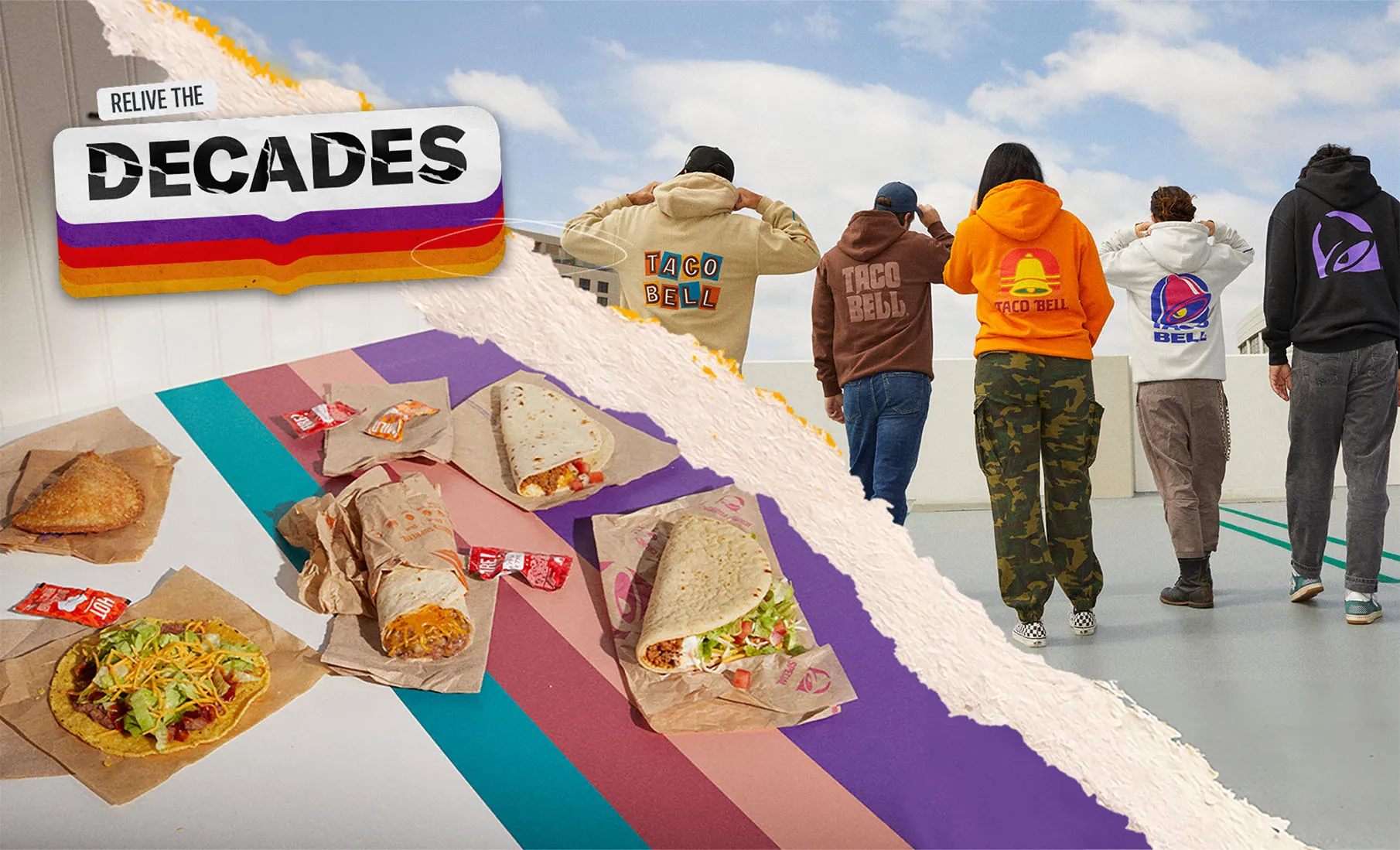
Lessons for Foodservice
In today’s attention economy, it often takes more than one “wow” factor to generate buzz and interest. Integrated campaigns – with digital and IRL touchpoints – win with media and consumers. They create a cohesive and consistent brand experience across multiple channels for newsworthiness and greater reach.
Consider these tactics – that when layered drove coverage and engagement for Taco Bell:
- Nostalgia as a Connector: Taco Bell reminded customers why they fell in love with the brand. They highlighted beloved menu items and marketing that evoked fond memories – and created FOMO in Gen Z.
- Value and Accessibility: Keeping in mind the value wars, Taco Bell kept prices accessible to capture a wider audience.
- Loyalty Integration: Using loyalty programs to offer exclusive items helped foster a sense of community and made Taco Bell fans feel they were part of a club.
- Limited-Time Offers (LTOs): LTOs almost always drive immediate foot traffic because of the scarcity effect. If customers don’t get the ‘80s Meximelt now, they may never have a chance again.
Taco Bell’s winning recipe isn’t applicable to just B2C brands. They’re broader themes that B2B brands can draw inspiration from, too, especially when targeting the next gen of buyers. B2B brands must fight to stay relevant. Remember: 90% of sales are won by brands that buyers already knew about before the research process.
Is your brand prioritizing creativity in 2025?
Industry Insights: A Lesson in Food Recalls: Don’t Be A Boar’s Head
With food recalls increasingly making headlines, proactive crisis planning is no longer optional for foodservice brands – it’s essential. As technology improves our ability to spot contamination and as consumers become more attuned to food safety issues, the ability to respond swiftly and transparently can make or break brand loyalty.
Recent outbreaks involving Boar’s Head illustrate how impactful a poorly handled crisis response can be.
Boar’s Head is under heat for a food recall crisis that’s dominated the news for months. Longstanding sanitation issues at their Jarratt, Virginia plant had led to repeated regulatory warnings, yet these problems went unresolved (for over a year!). A recent listeria outbreak linked to Boar’s Head liverwurst resulted in hospitalizations and fatalities, triggering consumer concerns and a frenzy of media coverage.
The company issued a recall and released a formal statement (way late IMO). Their lack of action and transparency when early alarm bells rang has eroded consumer trust. The long-term impact on loyalty and sales for Boar’s Head is TBD, but it’s safe to say they’ve damaged their premium positioning as a category leader.
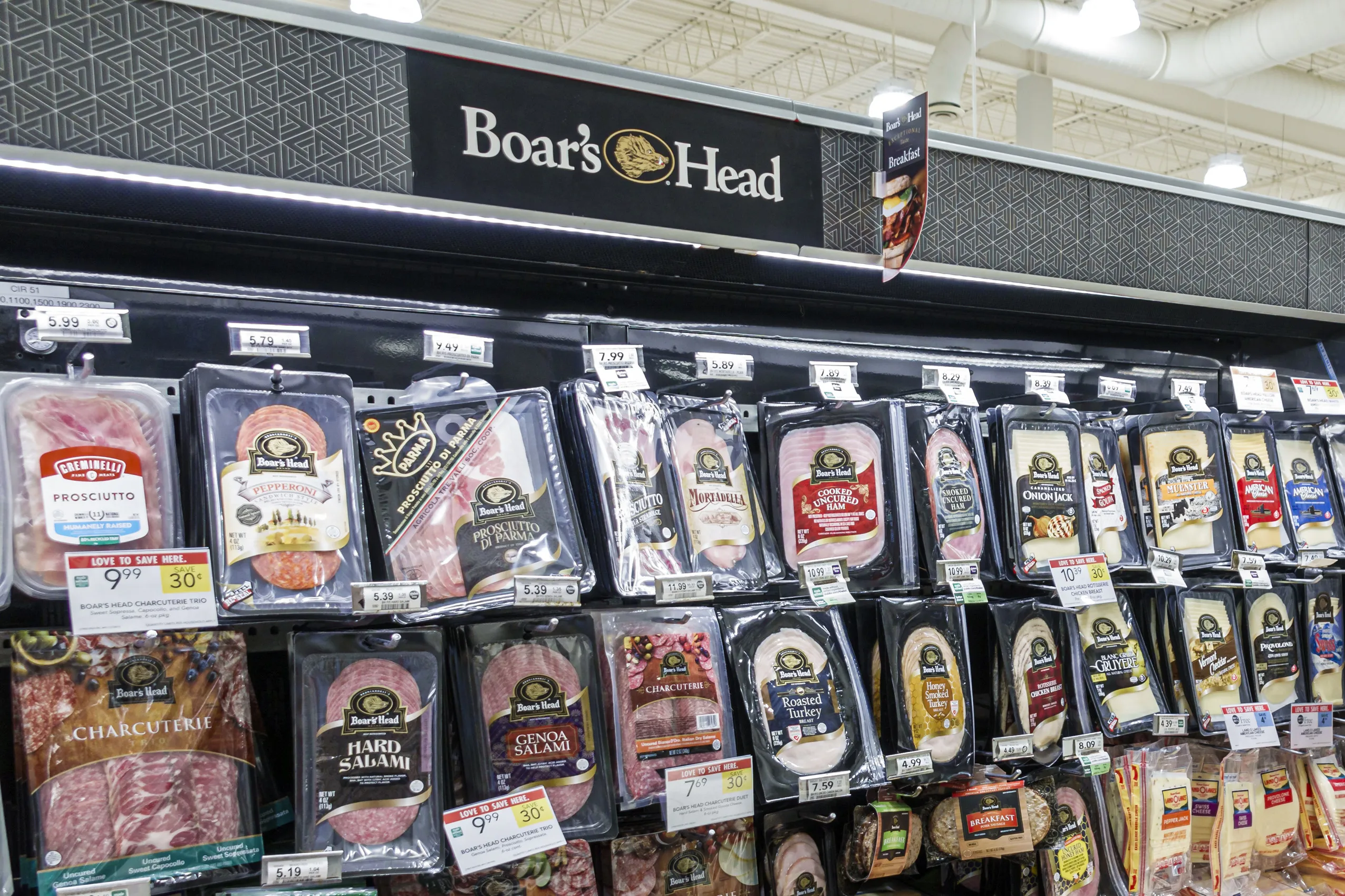
Takeaway for food service brands: If you don’t have a crisis management + communication plan in place, create one – ASAP!
Be proactive and stay agile both in action and word.
It’s not a small feat and requires many leaders in the room, so the sooner you get started, the better. AKA: If you don’t have a crisis plan in 2025, prioritize it.
When building the plan, consider bringing together…
Communications/Public Relations Lead(s)
This person manages all public-facing communication, including press releases, social media and media inquiries. They ensure that messaging is clear, consistent and empathetic, maintaining the brand’s credibility and transparency. Include them early and often. They need full insight into all other team members’ knowledge and actions. This role is key for maintaining customer trust and loyalty across channels.
Quality Assurance/Food Safety Expert(s)
This team member can provide technical insight into the nature of the contamination, help identify potential sources and advise on corrective actions. This type of information is often important to share externally to instill trust in your steps. They may also liaise with regulatory bodies like the FDA or USDA.
Supply Chain/Operations Lead(s)
This person may oversee product recall logistics, including the identification, retrieval and safe disposal of contaminated products. They coordinate with suppliers and distributors to address the issue across the supply chain. Similar to your quality assurance lead, their insight will be relevant to communication efforts.
Customer Service Lead(s)
Managing direct communication with consumers, this role fields inquiries, offers guidance and arranges for refunds or replacements. This person ensures customer concerns are addressed with empathy and timely responses. It’s important their communication is consistent with other external messages.
Legal Counsel
Last but not least, legal advisors ensure compliance with regulations, protect against liability and advise on statements to the public and regulators to manage risks. Always get their POV before communicating externally (and even internally).
Consider running mock scenarios with this group so that when a real crisis hits, you can respond quickly and calmly.
You can also check out this blog for best practices when building your plan. The short: in a crisis, speed, transparency and empathy are essential.
Do you have a crisis plan? When was the last time it was updated?
Goals: B2B Thought Leadership’s ROI: Considerations for 2025 Planning
Solve, don’t sell, in 2025. Put your brand in the background. Instead, focus on your audience’s interests, needs and experiences. Let their challenges (and how you support) guide your marketing and sales approach.
These principles are core to impactful thought leadership. They’re how you get customers coming to you vs. you calling on them.
In today’s digital-first, fragmented landscape, establishing authority through a consistent POV is paramount for B2B brands.
Thought leadership involves sharing expert-driven content that addresses industry challenges and trends. It’s often driven by PR teams but should be amplified through marketing efforts and individual salespeople.
Thought leadership often starts with earned content, like media articles, podcasts, speaking engagements and awards. But for thought leadership to effectively drive ROI, it must be integrated across marketing and sales functions, especially on digital channels like LinkedIn.
This strategy shifts the narrative from pitching a product or service to solving a problem, fostering trust and shortening the sales cycle.
The proof is in the pudding. Recent reports have shined light on the unignorable impact on B2B sales and brand perception.

Edelman and LinkedIn’s 2024 B2B Thought Leadership Impact Report
90% of decision-makers are more receptive to sales outreach from companies with consistent, high-quality thought leadership, and 73% say it’s a more trusted source for evaluating a brand’s expertise than traditional marketing.
CogniClick Thought Leadership 2024 Barometer
Companies effectively leveraging thought leadership saw a significant lift in sales conversations and upsell opportunities (compared to those who hadn’t).
If thought leadership is new to your organization, consider these best practices when building your 2025 strategy + budget:
- Invest in High-Quality Content: Focus on creating fewer, high-value pieces that delve deep into relevant topics. In 2025, brands that tackle niche industry issues or provide innovative insights will resonate most with decision-makers.
- Balance Executive and Company Thought Leadership: Combine executive thought leadership, which humanizes the brand, with company-led content that underscores collective expertise. This dual approach strengthens credibility and increases visibility across different channels.
- Amplify with Paid: Earned coverage reigns supreme, but advertorials are increasingly common as media rooms shrink. Allocate budget for PR placements in key industry publications and consider paid social to extend reach on platforms like LinkedIn. Amplification can further ensure your content reaches the right audience, at the right time, for greater impact.
Once your thought leadership is rocking and rolling, make sure you’ve got a reporting and analysis process in place. The best thought leadership is flexible, adapting with what content is performing well and the ever-evolving interests and needs of your audience.
DEI Download: Creating Media Lists That Go Beyond The “Mainstream”
As the media landscape continues to shift, different channels are growing in popularity and importance. Think: Substacks, podcasts, etc. (Fun fact: we’ve seen a 400% increase in secured podcast opportunities for our foodservice clients this year!)
People are choosing to supplement mainstream news with niche outlets. When building your PR plan in 2025, think beyond the “mainstream” and consider who your audience is and where they are getting their news.
Left unchecked, internal biases can subtly shape perceptions of which media are a “right fit,” potentially creating a disconnect between outreach efforts and the audiences you wish to reach.
Consider this: If a new restaurant is opening in a predominantly Hispanic neighborhood in NYC, a well-rounded media list should extend beyond mainstream outlets like Eater NY (though, still important!). Including local media tailored to Spanish-speaking audiences would help reach and resonate with the community the restaurant serves, like Noticia NY.
This inclusive approach starts with deeply understanding your audience and building media lists with reporters, outlets and mediums that represent cultural and linguistic backgrounds. This not only widens reach but also deepens engagement, paving the way for more meaningful and authentic storytelling.
Fill out the form below to be notified when our next blog is published.

